Yongey Mingyur Rinpoche

Mingyur Rinpoche in 2016
Title Rinpoche
Personal
Born 1975
Nepal
Religion Kagyu Nyingma
Part of a series on
Tibetan Buddhism

Sects[show]
Key personalities[show]
Teachings[show]
Practices and attainment[show]
Major monasteries[show]
Institutional roles[show]
Festivals[show]
Texts[show]
Art[show]
History and overview[show]
v
t
e
Yongey Mingyur Rinpoche (/ˈjɒŋɡeɪ/; born 1975)[1] is a Tibetan teacher and master of the Karma Kagyu and Nyingma lineages of Tibetan Buddhism. He has authored two best-selling books and oversees the Tergar Meditation Community, an international network of Buddhist meditation centers.
Contents
1Life
2Books
3References
4See also
5External links
Life[edit]
Mingyur Rinpoche was born in Nepal in 1975[1] the youngest of four brothers. His mother is Sönam Chödrön, a descendant of the two Tibetan kings Songtsen Gampo and Trisong Deutsen. His brothers are Chokyi Nyima Rinpoche, Tsikey Chokling Rinpoche, and Tsoknyi Rinpoche and his nephews are Phakchok Rinpoche and the reincarnation of Dilgo Khyentse Rinpoche, known popularly as Khyentse Yangsi Rinpoche. From the age of nine,[1] his father, Tulku Urgyen Rinpoche,[1] taught him meditation,[1] passing on to him the most essential instructions of the Dzogchen and Mahamudra traditions.
At the age of eleven, Mingyur Rinpoche began studies at Sherab Ling Monastery[1] in northern India, the seat of Tai Situ Rinpoche. Two years later, Mingyur Rinpoche began a traditional three-year retreat at Sherab Ling.[1] At the age of nineteen, he enrolled at Dzongsar Institute, where, under the tutelage of the renowned Khenpo Kunga Wangchuk, he studied the primary topics of the Buddhist academic tradition, including Middle Way philosophy and Buddhist logic. At age twenty, Mingyur Rinpoche became the functioning abbot of Sherab Ling.[1] At twenty-three, he received full monastic ordination.[1] During this time, Mingyur Rinpoche received important Dzogchen transmissions from Nyoshul Khen Rinpoche.[1]
In 2007, Mingyur Rinpoche completed the construction of Tergar Monastery in Bodhgaya, India, which will serve large numbers of people attending Buddhist events at this sacred pilgrimage site, serve as an annual site for month-long Karma Kagyu scholastic debates, and serve as an international study institute for the Sangha and laity. The institute will also have a medical clinic for local people.[2]
Mingyur Rinpoche has overseen the Kathmandu Tergar Osel Ling Monastery, founded by his father, since 2010. He also opened a shedra (monastic college) at the monastery.[3]
In June 2011, Mingyur Rinpoche left his monastery in Bodhgaya to begin a period of extended retreat. Rinpoche left in the middle of the night, taking nothing with him, but leaving a farewell letter.[4] He spent four years as a wandering yogi.[5][6]
During the first few weeks of this retreat, Rinpoche had a near-death experience, likely due to a severe form of botulism. This may have been the result of choosing to eat only the meals that were free and available to him after allowing himself to run out of money. The near-death experience, according to Rinpoche, was one of the most pivotal and transformative experiences of his life. After continuing with his retreat for four years, he later returned to his position as abbot. [7][6]
Books[edit]
- (with Eric Swanson) The Joy of Living: Unlocking the Secret and Science of Happiness ISBN 0-307-34625-0, Harmony Books 2007 (bought)
- (with Eric Swanson) Joyful Wisdom: Embracing Change and Finding Freedom ISBN 978-0-307-40779-5, Harmony Books 2009 (to buy)
- (with Torey Hayden and Charity Larrison) Ziji: The Puppy Who Learned to Meditate ISBN 978-0-95638580-2 2009
- (with Helen Tworkov) Turning Confusion into Clarity: A Guide to the Foundation Practices of Tibetan Buddhism ISBN 978-1-61180-121-7, Shambhala Publications under its Snow Lion imprint. 2014
- (with Helen Tworkov) In Love with the World: A Monk's Journey Through the Bardos of Living and Dying ISBN 978-0525512530 2019
References[edit]
- ^ Jump up to:a b c d e f g h i j Mingyur Rinpoche Bio
- ^ The Young Monks of Tergar Monastery Archived August 1, 2009, at the Wayback Machine
- ^ "Kathmandu Tergar Osel Ling Monastery". Tergar.org. Retrieved May 29, 2013.
- ^ Tergar International: [http://tergar.org/resources/letter-from-yongey-mingyur-rinpoche-before-entering-retreat/ Letter from Yongey Mingyur Rinpoche When Entering Retreat | Tergar International of Nepal
- ^ "In exclusive first interview...", 27 Nov 2015, lionsroar.com
- ^ Jump up to:a b Lion's Roar staff (15 July 2016). "Mingyur Rinpoche reveals what happened during his four years as a wandering yogi". Lion's Roar. Retrieved 19 June 2019.
- ^ "In exclusive first interview...", 27 Nov 2015, lionsroar.com
See also[edit]
Namchö Mingyur Dorje
External links[edit]
Official biography of Yongey Mingyur Rinpoche
Mingyur Rinpoche
Yongey Mingyur Rinpoche possesses a rare ability to present the ancient wisdom of Tibet in a fresh, engaging manner. His profound yet accessible teachings and playful sense of humor have endeared him to students around the world. Most uniquely, Rinpoche’s teachings weave together his own personal experiences with modern scientific research, relating both to the practice of meditation.
Born in 1975 in the Himalayan border regions between Tibet and Nepal, Yongey Mingyur Rinpoche is a much-loved and accomplished meditation master. From a young age, Rinpoche was drawn to a life of contemplation. He spent many years of his childhood in strict retreat. At the age of seventeen, he was invited to be a teacher at his monastery’s three-year retreat center, a position rarely held by such a young lama. He also completed the traditional Buddhist training in philosophy and psychology, before founding a monastic college at his home monastery in north India.
In addition to extensive training in the meditative and philosophical traditions of Tibetan Buddhism, Mingyur Rinpoche has also had a lifelong interest in Western science and psychology. At an early age, he began a series of informal discussions with the famed neuroscientist Francisco Varela, who came to Nepal to learn meditation from his father, Tulku Urgyen Rinpoche. Many years later, in 2002, Mingyur Rinpoche and a handful of other long-term meditators were invited to the Waisman Laboratory for Brain Imaging and Behavior at the University of Wisconsin-Madison, where Richard Davidson, Antoine Lutz, and other scientists examined the effects of meditation on the brains of advanced meditators. The results of this groundbreaking research were reported in many of the world’s most widely read publications, including National Geographic and Time.
Mingyur Rinpoche teaches throughout the world, with centers on five continents. His candid, often humorous accounts of his own personal difficulties have endeared him to thousands of students around the world. His best-selling book, The Joy of Living: Unlocking the Secret and Science of Happiness, debuted on the New York Times bestseller list and has been translated into over twenty languages. Rinpoche’s most recent books are Turning Confusion into Clarity: A Guide to the Foundation Practices of Tibetan Buddhism, Joyful Wisdom: Embracing Change and Finding Freedom, and an illustrated children’s book entitled Ziji: The Puppy that Learned to Meditate.
In early June, 2011, Mingyur Rinpoche walked out of his monastery in Bodhgaya, India and began a “wandering retreat” through the Himalayas and the plains of India that lasted four and a half years. When not attending to the monasteries under his care in India and Nepal, Rinpoche spends time each year traveling and teaching worldwide.
Detailed Biography of Yongey Mingyur Rinpoche
MINGYUR RINPOCHE –DETAILED BIOGRAPHY
Yongey Mingyur Rinpoche was born in 1975 in a small Himalayan village near the border of Nepal and Tibet. Son of the renowned meditation master Tulku Urgyen Rinpocheand Sönam Chödrön(a descendant of the two Tibetan kings Songtsen Gampo and Trisong Detsen),Mingyur Rinpoche was drawn to a life of contemplation from an early age and would often run away to meditate in the caves that surrounded his village. In these early childhood years, however, he suffered from panic attacks that hinderedhis ability to interact with others and enjoy his idyllic surroundings.Mingyur Rinpoche's maternal grandfather, Lama Tashi Dorje, was the most respected Lama in thewhole Nubri area and he had a very close link with Tulku Urgyen Rinpoche.He was the head of Pema Choling Monastery, in Nubri, and Mingyur Rinpoche's earliest meditation teacher, when he was just a small boy.At the age of nine, Rinpoche left to study meditation with his father at Nagi Gonpa, a small hermitage on the outskirts of Kathmandu valley. For nearly three years, Tulku Urgyen guided him experientially through the profound Buddhist practices of Mahamudra and Dzogchen, teachings that are typically considered highly secret and only taught to advanced meditators. Throughout this time, his father would impart pithy instructions to his young son and then send him to meditate until he had achieved a direct experience of the teachings.When he was eleven years old, Mingyur Rinpoche was requested to reside at Sherab Ling Monastery in Northern India, the seat of Tai Situ Rinpoche and one of the most important monasteries in the Kagyu lineage. While there, he studied the teachings that had been brought to Tibet by the great translator Marpa, as well as the rituals of the Karma Kagyu lineage, with the retreat master of the monastery, Lama Tsultrim. He was formally enthroned as the 7th incarnation of Yongey Mingyur Rinpoche by Tai Situ Rinpoche when he was twelve years old.Three Year RetreatWhen Mingyur Rinpoche turned thirteen, he begged both his father and Tai Situ Rinpoche for special permission to enter the traditional three-year retreat that was set to begin at Sherab Ling Monastery. It was highly unusual for someone so young to make such a request, but they both consented and soon Mingyur Rinpoche began his retreat under the guidance of Saljey Rinpoche, a learned and experienced meditation master who had spent half of his life in strict retreat.During the next three years, Mingyur Rinpoche practiced the preliminaries, which prepare the meditator for advanced contemplative practice; the development stage, which uses visualization and sacred sounds to transform the processes of ordinary perception; the completion stage, which involves working with the subtle energies of the body; and Mahamudra, a form of practice that allows the meditator to directly experience the luminous clarity of the mind’s true nature. The great diligence that Mingyur Rinpoche demonstrated throughout the retreat resulted in his attaining an extraordinary level of mastery over the mind and emotions. At this time, he completely overcame the panic attacks that had troubled him as a child, discovering first-hand how meditation can be used to deal with challenging emotionalproblems.When Yongey Mingyur Rinpoche completed his three-year retreat, his beloved teacher Saljey Rinpoche passed away, leaving vacant his key position at Sherab Ling monastery. To replace him, Tai Situ Rinpoche appointed Mingyur Rinpoche as the monastery’s next retreat master, making him responsible for guiding senior monks and nuns through the intricacies of Buddhist meditation practice in the next three-year retreat. The seventeen-year old Mingyur Rinpoche was one of the youngest lamas to ever hold this position.Overseeing Sherab Ling MonasteryMingyur Rinpoche continued to receive important transmissions from his father and Khenchen Thrangu, an important Kagyu lama. When he was nineteen, he enrolled at Dzongsar Monastic College, where, under the tutelage of the renowned Khenpo Kunga Wangchuk, he studied the primary topics of the Buddhist academic tradition, including Middle Way philosophy and Buddhist logic.When he was twenty years old, he was asked to oversee the activities ofSherab Ling Monasterywhile its abbot, Tai Situ Rinpoche, was away for an extended period.In his new role, he was instrumental in establishing a new monastic college at the monastery, where he worked as an assistant professor while simultaneously carrying out his duties as retreat master for a third three year retreat. Throughout this period, which lasted until he was twenty-five, Rinpoche often stayed in retreat for periods of one to three months while continuing to oversee the activities of Sherab Ling Monastery. When he wastwenty-three years old, he received full monastic ordination from Tai Situ Rinpoche.Important TransmissionsDuring this period, Mingyur Rinpoche received an important Dzogchen transmission from the great Nyoshul Khen Rinpoche, a renowned teacher from the Nyingma School of Tibetan Buddhism. For a total of one hundred days, spread over a number of years, this great meditation master transmitted the “oral lineage” of the Heart Essence of the Great Perfection. These teachings on the breakthrough (trekchö) and direct leap (tögal) of the Dzogchen lineage are extremely secret and may only be transmitted to one person at a time. Much like he had studied with his father years before, Mingyur Rinpoche received a pithy meditation instruction and returned for more teachings only once he had directly experienced what was taught. This rare form of teaching is known as “experiential guidance.”
In the years that followed, Mingyur Rinpoche continued to study the five traditional subjects of the Buddhist tradition (Madhyamaka, Prajnaparamita, Abhidharma, Pramana, and Vinaya), in addition to other important topics. He also continued to refine his meditative realization through daily practice and periodic solitary retreats.To this day, Mingyur Rinpoche continues his own studyand meditation. More recently, he received important Dzogchen transmissions from Kyabjé Trulshik Rinpoche, including the Transmitted Teachings of the Nyingma School (Nyingma Kama) and Fourfold Heart Essence (Nyingtik Yabshi). He also participated in transmissions of Jamgon Kongtrul’s Treasury of Precious Treasures (Rinchen Terdzö) and Treasury of Instructions (Damngak Dzö), which took place at Sherab Ling Monastery.Buddhism and ScienceIn addition to his extensive background in meditation and Buddhist philosophy, Mingyur Rinpoche has held a lifelong interest in psychology, physics, and neurology. At an early age, he began a series of informal discussions with the famed neuroscientist Francisco Varela, who came to Nepal to learn meditation from his father, Tulku Urgyen Rinpoche. Many years later, in 2002, Mingyur Rinpoche and a handful of other long-term meditators were invited to the Waisman Laboratory for Brain Imaging and Behavior at the University of Wisconsin at the request of His Holiness the Dalai Lama. There, Richard Davidson, Antoine Lutz, and other scientists examined the effects of meditation on the brains of advanced meditators. The results of this groundbreaking research were reported in many of the world’s most widely read publications, includingNational GeographicandTime. Follow-up studies were carried out at Harvard University, MIT, and other important research centers.Rinpoche continues his involvement with this research and contributes actively to the vibrant dialogue between Western science and Buddhism. He is an advisor to the Mind and Life Institute and participates as a research subject in the ongoing studies of the neural and physiological effects of meditation.Rinpoche’s teaching style has been deeply influenced by his knowledge of science. He is especially well-known for his ability to enrich his presentation of the ancient insights and practices of Tibetan Buddhism with the findings of modern science. It is his hope that the emerging relationship between these seemingly disparatefields will yield key insights to help us realize our full human potential.ActivitiesIn addition to his responsibilities at Sherab Ling Monastery, Mingyur Rinpoche is the abbot of Tergar Osel Ling Monastery in Kathmandu, Nepal, and Tergar Rigzin KhachöTargyé Ling Monastery in Bodhgaya, India. He also teaches regularly throughout Europe, North and South America, and Asia, where he leads a growing number of Tergar Meditation Centers and Meditation Groups.Rinpoche is an internationally-acclaimed author.His first book,The Joy of Living: Unlocking the Secret and Science of Happiness, debuted on theNew York Timesbestseller list and has been translated into over twenty languages. His second book,Joyful Wisdom: Embracing Change and Finding Freedom, explores how difficult emotions and challenging life situations can be used as stepping stones to discover joy and freedom. Turning Confusion Into Clarity: A Guide to the Foundation Practices of Tibetan Buddhism, gives detailed instruction and inspiring advice for those embarking on the Tibetan Buddhist path in earnest. Mingyur Rinpoche has also written an illustrated children’s book, entitledZiji: The Puppy that Learned to Meditate.View more at tergar.org/books.One of Mingyur Rinpoche’s greatest passions is bringing the practice of meditation to people from all walks of life. He is working with professionals from a wide range of disciplines to adapt his Joy of Living retreats for use in different contexts, including hospitals, schools, prisons, and leadership training. As part of this effort, he is developing programs to train facilitators and instructors to teach the practice of meditation in these varied settings.In early June, 2011, Mingyur Rinpoche walked out of his monastery in Bodhgaya, India and began a “wandering retreat” through the Himalayas and the plains of India that lasted four and a half years. When not attending to the monasteries under his care in India and Nepal, Rinpoche spends time each year traveling and teaching worldwide

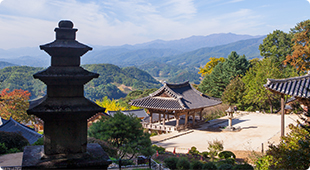
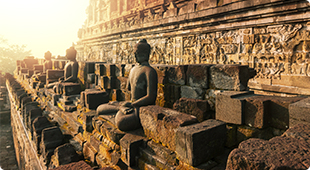
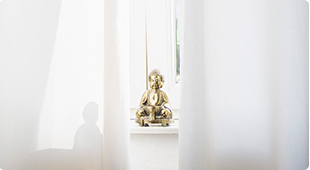
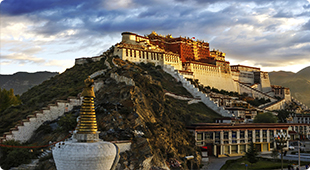
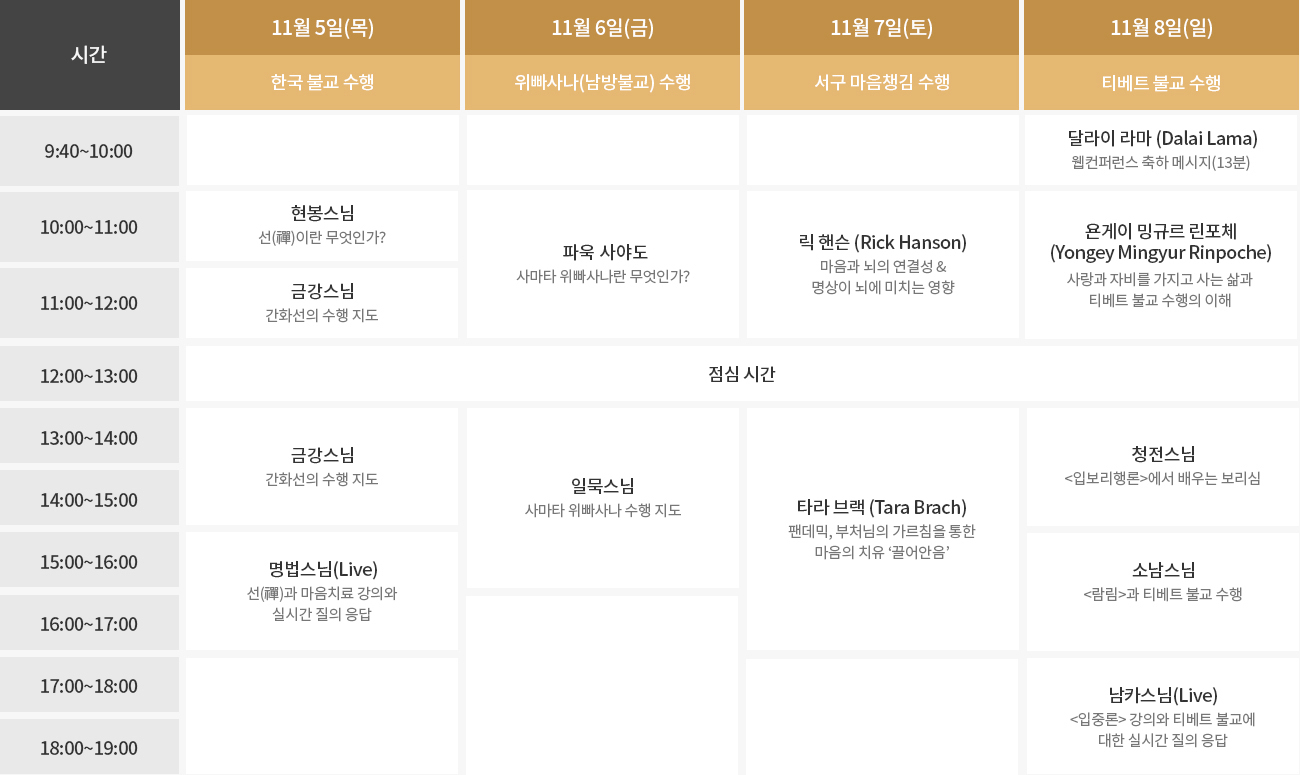
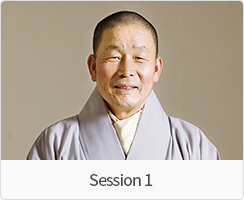 현봉스님
현봉스님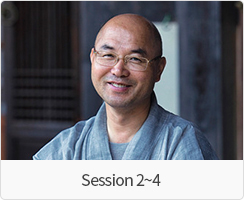 금강스님
금강스님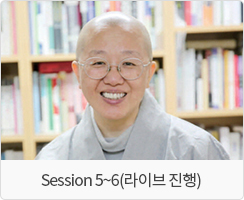 명법스님
명법스님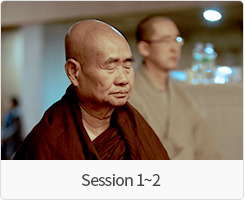 파욱 사야도
파욱 사야도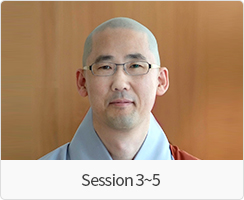 일묵스님
일묵스님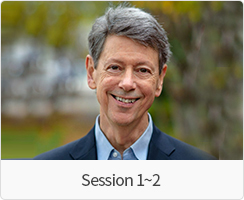 릭핸슨 (Rick Hanson)
릭핸슨 (Rick Hanson)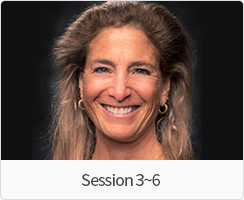 타라 브랙 (Tara Brach)
타라 브랙 (Tara Brach)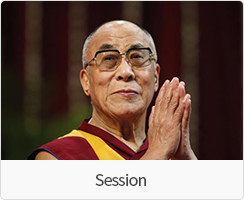 달라이 라마 (Dalai Lama)
달라이 라마 (Dalai Lama)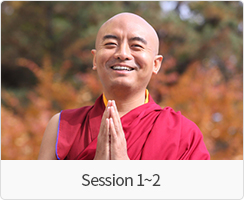 욘게이 밍규르 린포체
욘게이 밍규르 린포체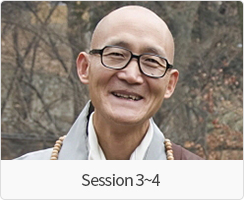 청전스님
청전스님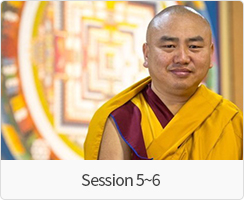 소남스님
소남스님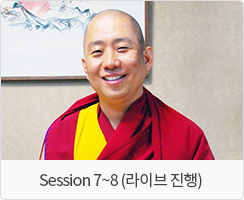 남카스님
남카스님